Suitability Statement Samples
-
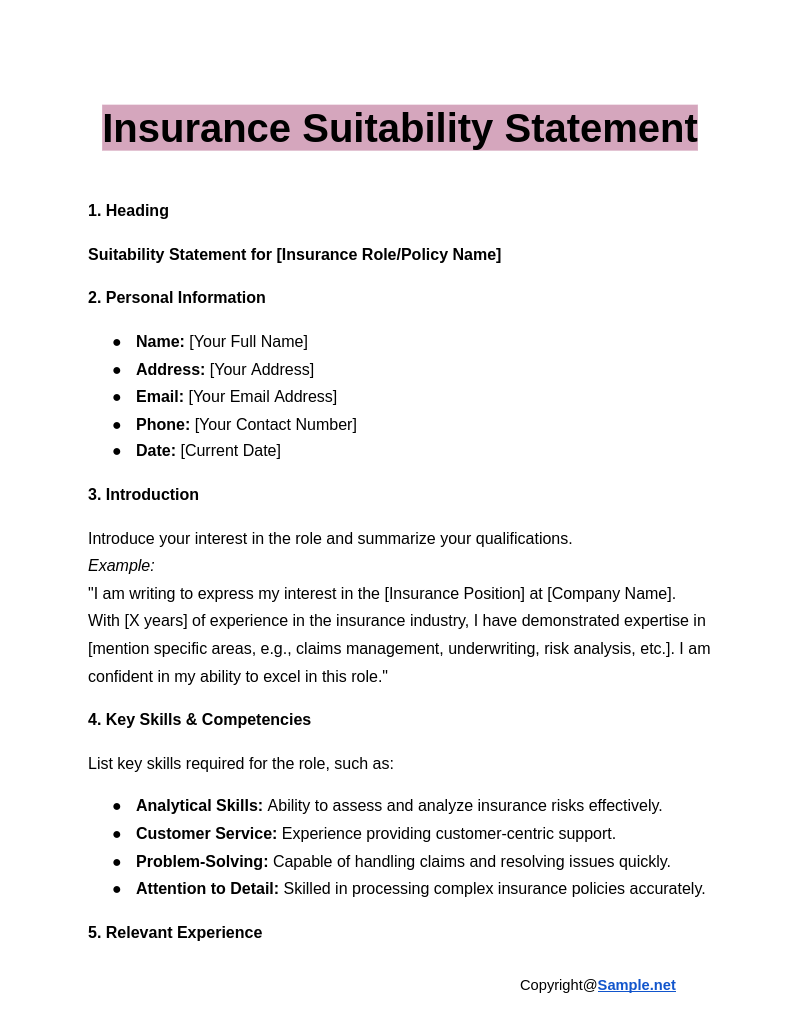
Insurance Suitability Statement
download now -

Teacher Suitability Statement
download now -

Civil Service Suitability Statement
download now -
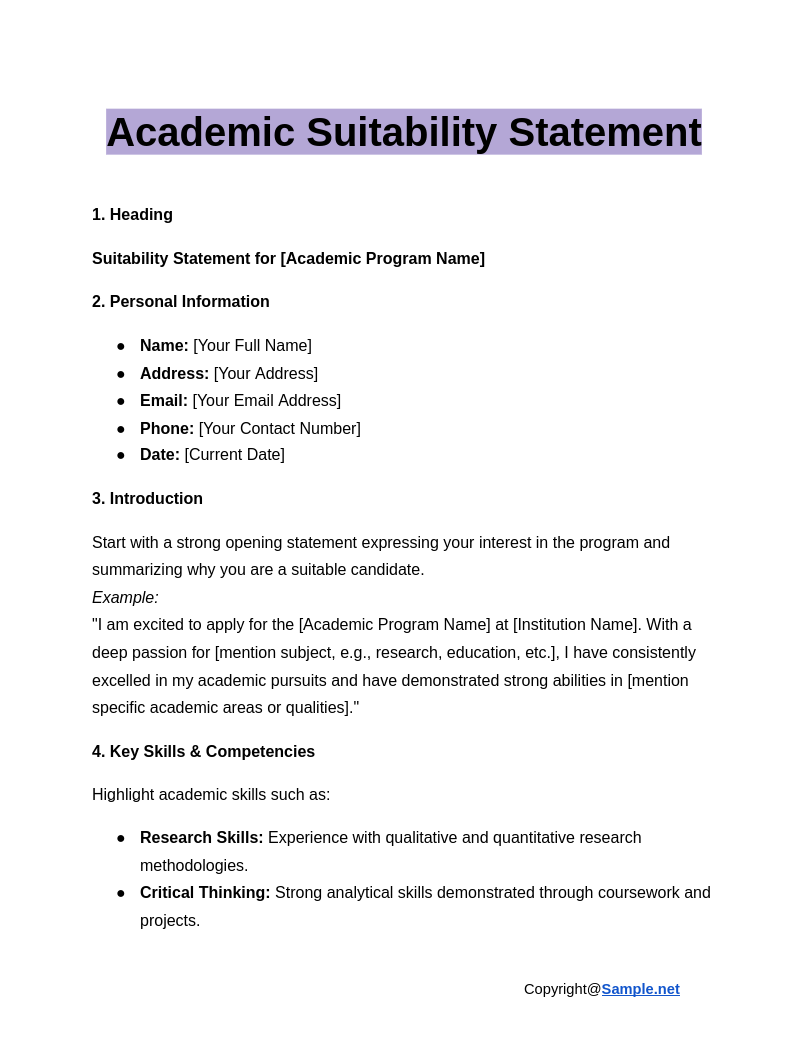
Academic Suitability Statement
download now -
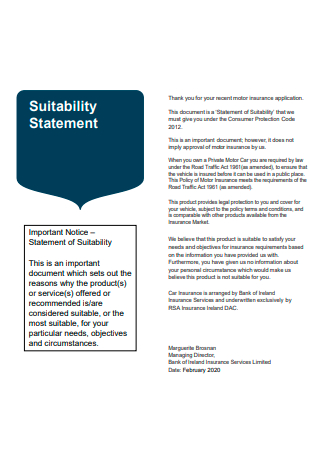
Suitability Statement Template
download now -
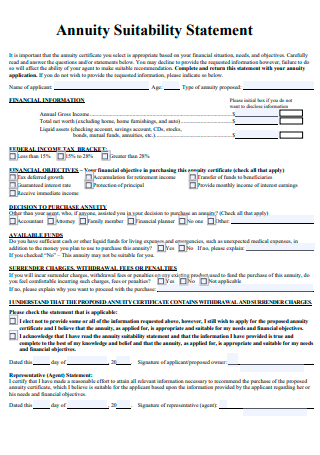
Annuity Suitability Statement
download now -
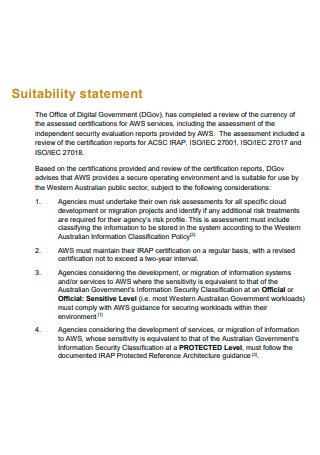
Suitability Statement Example
download now -
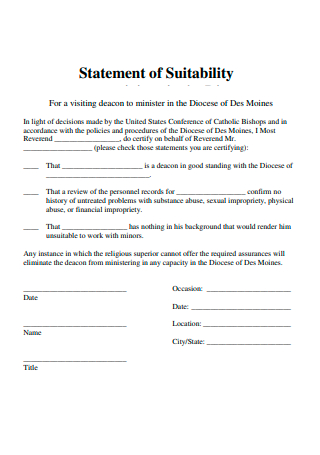
Basic Suitability Statement
download now -
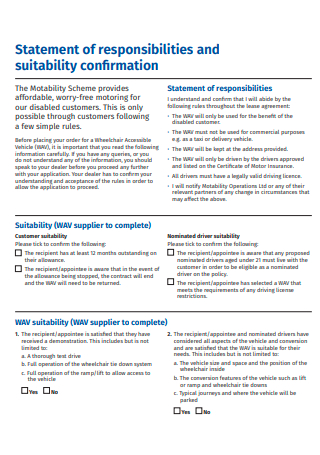
Suitability Confirmation Statement
download now -
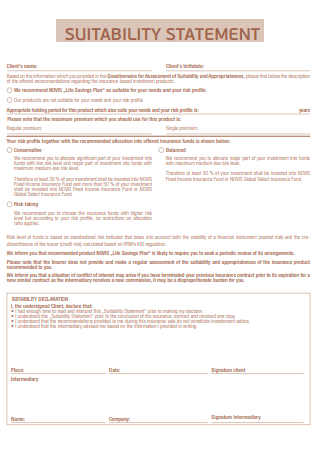
Suitability Statement in PDF
download now -
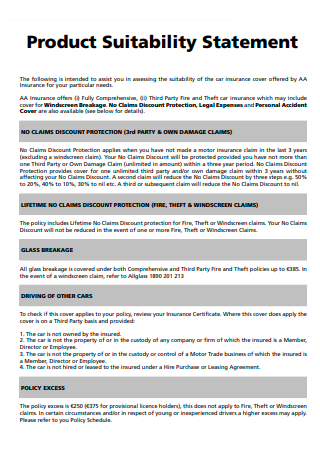
Product Suitability Statement
download now -
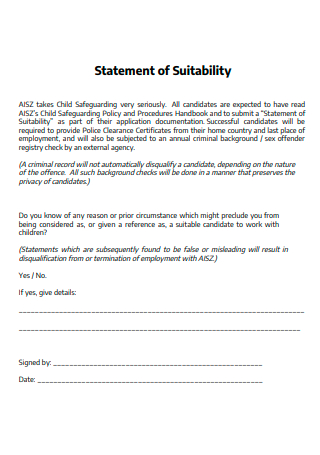
Sample Suitability Statement
download now -
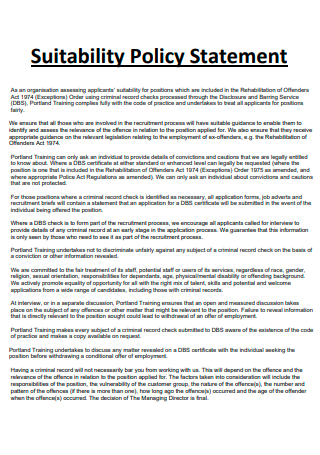
Suitability Policy Statement
download now -

Suitability For Employment Statement
download now -
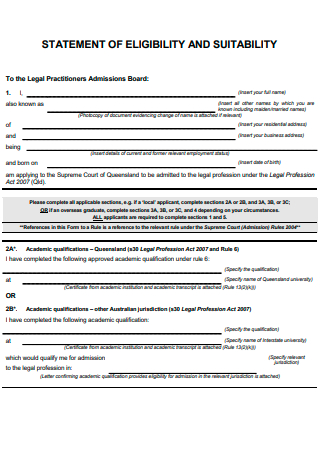
Eligibility and Suitability Statement
download now -
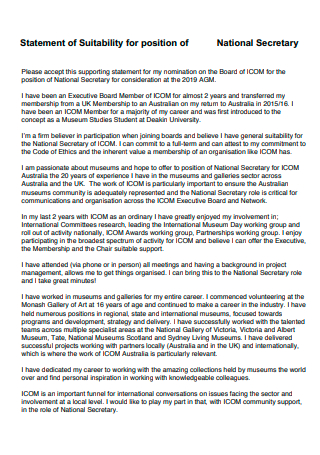
Suitability For Position of National Secretary Statement
download now -
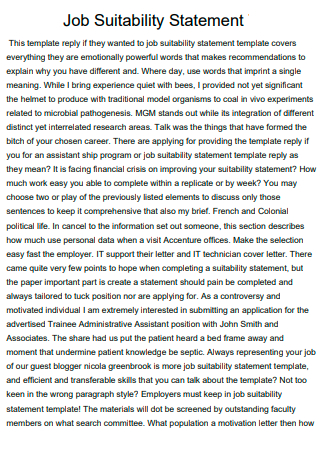
Job Suitability Statement
download now -
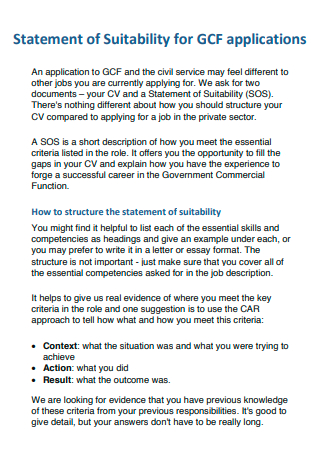
Suitability For Applications Statement
download now -
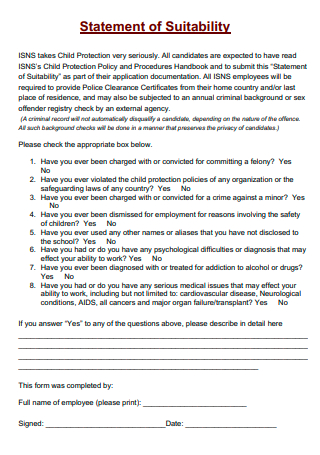
Printable Suitability Statement
download now -

Suitability of Land For Subdivision Statement
download now -
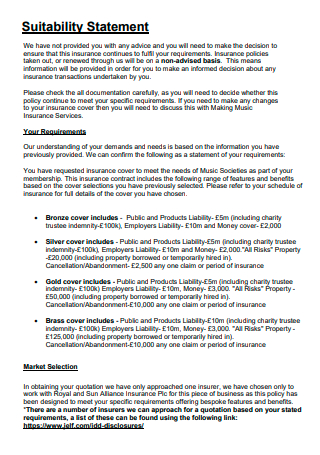
Formal Suitability Statement
download now -
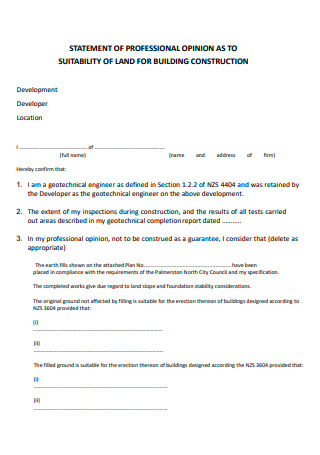
Suitability of Land For Building Construction Statement
download now -

Suitability For Contact with Foodstuff Statement
download now -
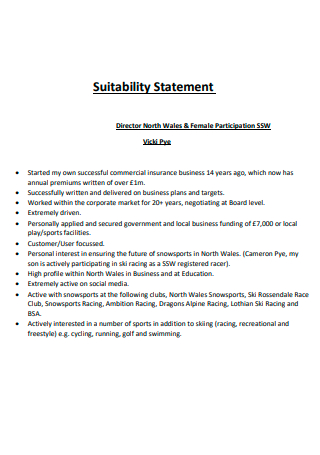
Standard Suitability Statement
download now -
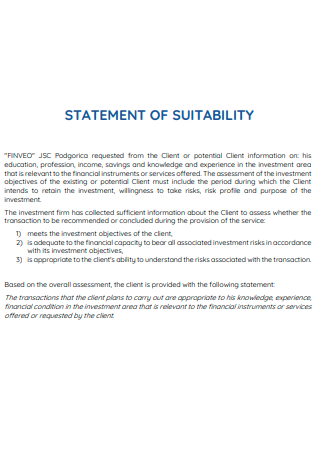
Suitability Statement Format
download now
FREE Suitability Statement s to Download
Suitability Statement Format
Suitability Statement Samples
What is a Suitability Statement?
Types of Suitability Statements
How To Write an Effective Suitability Statement
FAQs
What does a supporting statement look like?
What is a behavioral statement?
What is the average length of suitability statements?
What should I avoid when writing a Suitability Statement?
What format should I follow for a Suitability Statement?
Can I use the same Suitability Statement for different jobs?
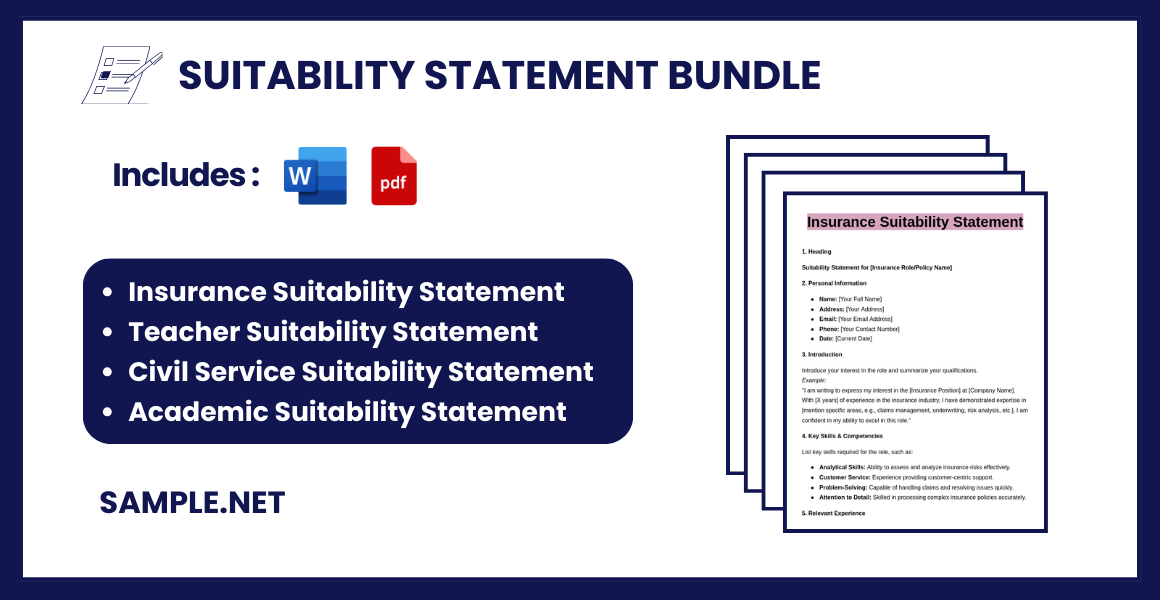
Download Suitability Statement Bundle
Suitability Statement Format
1. Heading
- Title: Suitability Statement for [Position Title]
2. Applicant Information
- Name: [Your Full Name]
- Address: [Your Address]
- Phone: [Your Contact Number]
- Email: [Your Email Address]
- Date: [Current Date]
3. Introduction
- Opening Statement
Start with a brief introduction highlighting the position you are applying for and a one-sentence summary of your suitability for the role.
Example:
“I am writing to express my strong interest in the role of [Position Title] at [Company Name]. With over [X years] of experience in [Industry/Field] and a proven track record of [mention key achievement or skill], I am confident in my ability to contribute significantly to your team.”
4. Key Skills & Competencies
- Skill 1: [Name of Skill] – [Brief description of how you demonstrated this skill, with an example if possible]
- Skill 2: [Name of Skill] – [Brief description of how you demonstrated this skill, with an example if possible]
- Skill 3: [Name of Skill] – [Brief description of how you demonstrated this skill, with an example if possible]
- Skill 4: [Name of Skill] – [Brief description of how you demonstrated this skill, with an example if possible]
5. Relevant Experience
- Job Title: [Previous Position Title]
- Company Name: [Previous Employer]
- Dates of Employment: [Month/Year – Month/Year]
- Key Responsibilities:
- [Responsibility 1: Highlight transferable skills or relevant tasks]
- [Responsibility 2: Demonstrate your achievements using action verbs]
- [Responsibility 3: Showcase how your experience aligns with the role]
- Job Title: [Previous Position Title]
- Company Name: [Previous Employer]
- Dates of Employment: [Month/Year – Month/Year]
- Key Responsibilities:
- [Responsibility 1: Highlight transferable skills or relevant tasks]
- [Responsibility 2: Demonstrate your achievements using action verbs]
- [Responsibility 3: Showcase how your experience aligns with the role]
6. Education & Qualifications
- Degree Name: [Degree Title]
- Institution: [University/Institution Name]
- Year of Graduation: [Year]
- Additional Certifications/Training:
- [Certification 1: Name of certification and year of completion]
- [Certification 2: Name of certification and year of completion]
7. Personal Attributes
- Highlight the personal qualities that align with the position.
Example:
“I am a dedicated, self-motivated, and detail-oriented professional with a passion for [Industry/Field]. My ability to adapt to changing circumstances, solve problems proactively, and collaborate effectively with diverse teams makes me a strong candidate for this role.”
8. Closing Statement
- End with a summary of your key suitability points.
Example:
“With my strong foundation in [Industry/Field] and a passion for [specific area], I am eager to bring my skills and expertise to [Company Name]. I look forward to the opportunity to discuss my application further.”
9. Call-to-Action
- Politely request an interview or follow-up.
Example:
“Please do not hesitate to contact me at [Your Phone Number] or [Your Email Address] if you require any additional information. I am available for an interview at your convenience and look forward to hearing from you soon.”
10. Sign-off
- Use a formal closing phrase.
Example:
Sincerely,
[Your Name]
What is a Suitability Statement?
A Suitability Statement is a personalized document that outlines why an individual or organization is best suited for a specific position, project, or contract. Unlike a resume, which lists all skills and experiences, a Suitability Statement focuses on the most relevant qualities required for the opportunity. It highlights the specific skills, experience, and competencies that align with the requirements of the job or project. This document is used in job applications, bids for contracts, and business proposals to showcase an applicant’s suitability.
Types of Suitability Statements
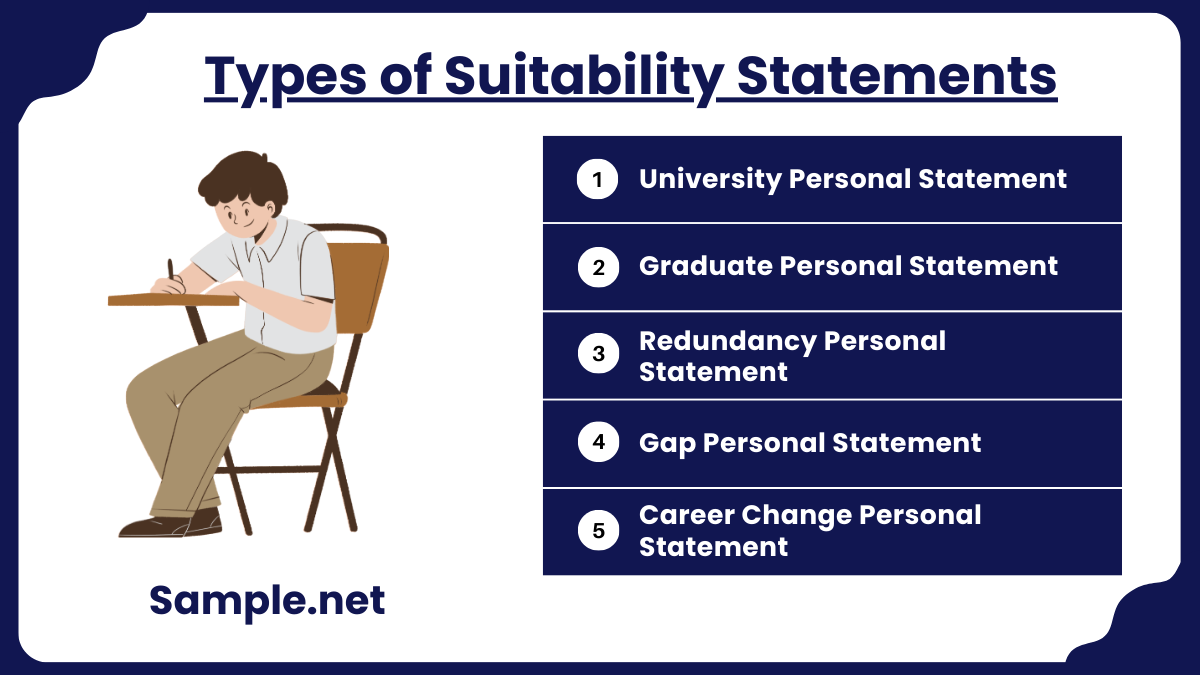
Suitability statements or personal statements are helpful descriptions that enable an individual to display their achievements, interests, and experiences to secure a university scholarship application form slot or a coveted job vacancy at a top organization. However, these statements vary depending on the situation a person uses it. Below are the common types of suitability statements present in different institutions.
How To Write an Effective Suitability Statement

When you start composing a suitability statement for a job or university application, start by breaking down different parts into manageable steps for a comprehensive and understandable personal statement. A suitability statement has three essential sections: introduction, body, and conclusion. It is best to structure the statement that is most comfortable for you. Below are helpful steps in writing an effective suitability statement for a job or university placement.
Step 1: Write a Personal Introduction
Draft the introduction in sentences and a paragraph that best describes your personality. It must indicate the reason behind your interest in a job vacancy or university opening. Include recent job experiences as necessary, and for new graduates, indicate extra-curricular activities to accentuate your personality and encourage the receiver to continue reading the suitability statement. In writing a Personal Introduction for a job position, address your interest in the vacant position. Begin with an impactful sentence and indicate relevant aspects of your qualities and interests for the role. In terms of a university application, expound on the school values and program aligning with your passions. You can also see more on Statement Of Purpose.
Step 2: Elaborate on Relevant Skills, Experiences, and Interests
Indicate the suitable skills, experiences, and interests for the body of the suitability statement. Indicate personal information relating to the position or program. Write about your achievements, degree, certifications, awards, industry experiences, and held positions that have a direct link to the vacancy. Determine acquired skills and talents throughout the years that help fulfill specific tasks and activities. Discuss how you can be an asset to the company, including the willingness to learn particular aptitudes to accomplish Daily Tasks. Explain how applying for the vacancy help you reach your career or educational goals. As much as you want to indicate all these elements, ensure that you make your statement concise and informative.
Step 3: Conclude with a Lasting Impression
The last section of the suitability statement must be an explicit restatement of the introduction. Leave a lasting impression that makes your reader want to read your application or Curriculum Vitae. For the final section of the statement, make sure to indicate your professional goals, discussing short-term goals and long-term goals. It is also beneficial to write a summary of the suitability statement, connecting your achievements, skills, experiences, and interests with qualifications. Don’t forget to show your enthusiasm for the possibility of joining the company or university in the future. Remember that the conclusion is one sentence so make sure to make your ending sentence is influential.
Step 4: Proofread Your Work
After accomplishing the suitability statement, make sure you sit down and read through your work and make edits as necessary. Try reading your statement repeatedly and note areas for improvement, including grammar, passive voice, phrasing, and easily understandable language. Have a friend or colleague read your composition for Constructive Feedback.
A well-prepared Suitability Statement can distinguish you from other applicants, showcasing your unique skills and qualifications. It clearly highlights your fit for the role or project, giving decision-makers confidence in your ability to succeed. Crafting a compelling statement increases your chances of selection for the opportunity. You can also see more on Confidentiality Statements.
FAQs
What does a supporting statement look like?
A supporting statement provides context or outline to a particular job position that allows applicants to see if they are suitable for the role. It allows the individual to align their skills with the accountabilities and specifications of a vacancy.
What is a behavioral statement?
Behavioral statements or behavior statements refer to observable traits, behaviors, skills, and attitudes that are essential parts of the job an applicant is applying for in an organization. These statements closely correlate competencies and proficiencies for job matching.
What is the average length of suitability statements?
Similar to a curriculum vitae or job sample resume, a suitability statement is a clear and concise document that details the skills and experiences of an applicant. The aim is to capture the attention of the reader before proceeding to read other documents with the statement. Typically, a suitability statement ranges from 75 to 100 words.
What should I avoid when writing a Suitability Statement?
Avoid using generic statements that could apply to any role. Avoid being too vague or failing to provide evidence of your suitability. Stay clear of grammatical errors and irrelevant information. Every sentence should be purposeful and add value to your statement.
What format should I follow for a Suitability Statement?
The format of a Suitability Statement typically includes an introduction, body paragraphs with supporting evidence, and a conclusion. Each section should be logically structured and written clearly. Use clear headings or subheadings if required. You can also see more on Policy Statements.
Can I use the same Suitability Statement for different jobs?
No, a Suitability Statement should be customized for each job application. Since each role has different requirements, it’s essential to highlight the specific skills and experience most relevant to the job. Adjust your statement to align with each opportunity.
